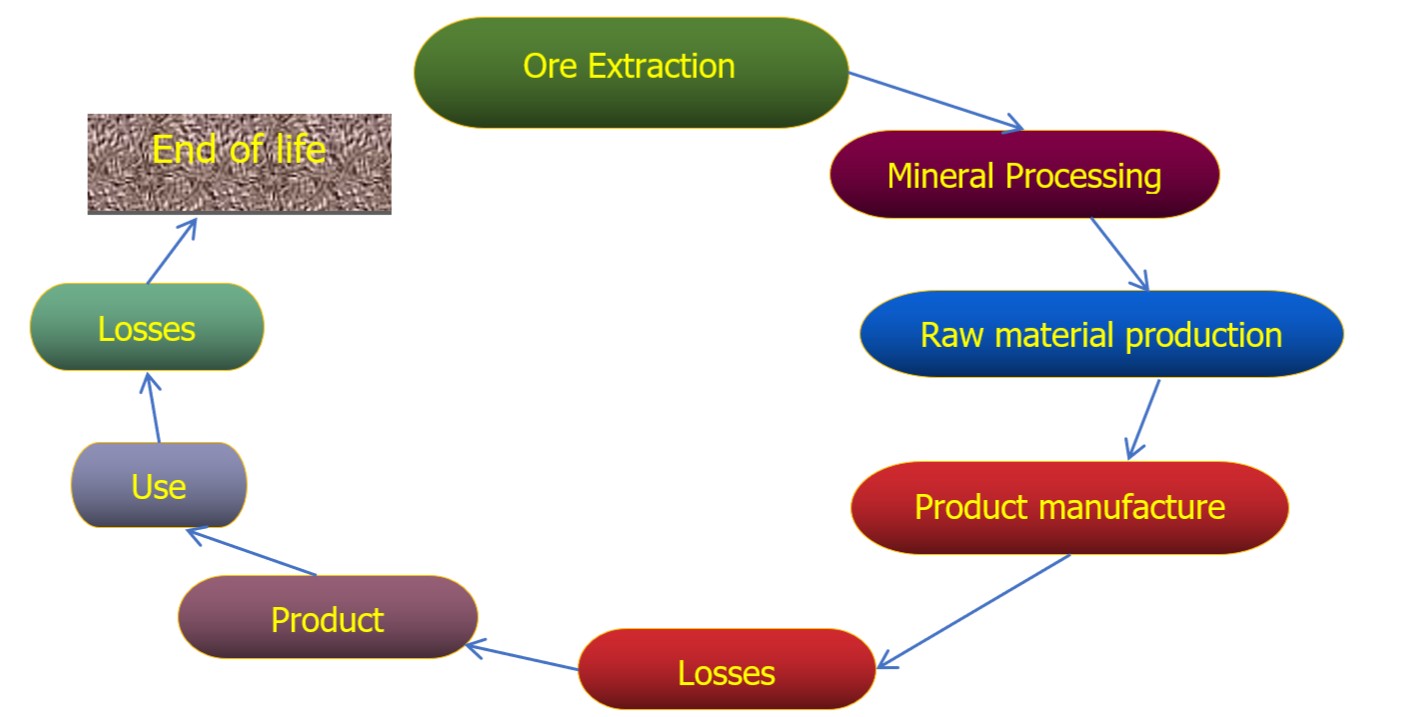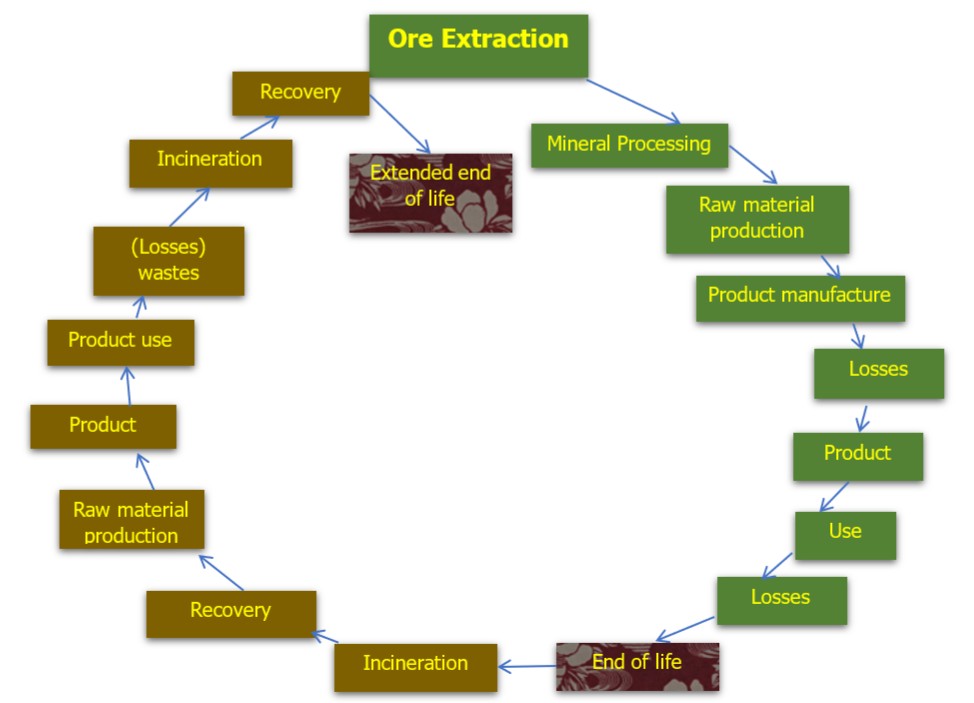
RARE PRECIOUS & NOBLE METAL RECOVERY
Silver, gold, platinum and palladium are some of the key precious metals used by individuals and industries. Why are they called `precious’ metals? What are their uses and life?
These are called ‘precious’ because these are rare, not easily available and hence are expensive.
With regard to their usage, the following diagram depicting their life cycle would indicate their source, application and end of life.
“Gold” is a common precious metal and is used in abundance for making jewellery items. India is one of the largest consumers of gold due to the particular attachment the Indian people have to this yellow metal. In 2021, India became the second largest consumer of gold jewellery in the world, having bought of gold jewellery, second only to China (673 tonnes), but comfortably ahead of all other gold-consuming markets.
While gold is called the yellow metal, the other three white metals fall in the PGM group viz. “Platinum, Palladium and Rhodium.” Platinum is commonly used as a catalyst for the production of chemical products like silicone, benzene, ammonia and nitric acid. Platinum and palladium are also used in the electronics industry to make multi-layer ceramic capacitors for electronic equipment like mobile phones, printers, computers and fax machines.
The largest use of palladium today is in catalytic converters. Palladium is also used in jewellery, dentistry, watch making, blood sugar test strips, aircraft spark plugs, surgical instruments, and electrical contacts. The catalyst component of a catalytic converter is usually platinum, along with palladium, and rhodium. All three of these PGMs are extremely rare but have a broad range of applications in addition to catalytic converters.

Rhodium is the rarest of all non-radioactive metals. It occurs uncombined in nature, along with other platinum metals, in river sands in North and South America. It is also found in the copper-nickel sulphide ores of Ontario, Canada. Rhodium is obtained commercially as a by-product of copper and nickel refining.
Rhodium added to platinum in small amounts yields alloys that are harder and lose weight at high temperatures even more slowly than pure platinum. Such alloys are used for laboratory furnace crucibles, spark-plug electrodes, and catalysts in very hot chemical environments (including automobile catalytic converters).
When we analyse the significant role played by Haat during the life cycle of a component made up of a precious metal, it surprises us that Haat not only follows these precious metals from their origin to their end of life but goes beyond by recovering these from the wastes and reusing them over and over again. Haat’s role in their life time is worth recounting.
Gold is mined both in open-cast and underground mines. Palladium has also been found uncombined in nature, but is mostly found in sulfide minerals such as braggite. It is extracted commercially as a by-product of nickel refining. It is also extracted as a by-product of copper and zinc refining.
These precious metals are not available in abundance and hence are expensive. Their availability depends on their present use, the current applications and rate of consumption in future. Since their availability is limited, the users have to be very careful in their consumption.
Realising the above and knowing that Haat cannot venture into discovering more ways of getting these precious metals, Haat has been endeavouring to extend their life cycle through recovery and re-use as much as possible with its exclusively designed PMR model incinerators, which help recover these rare metals, whether used by the jewellery manufacturer or pharma or chemical industry.
In the case of the jewellery industry, gold and platinum in fine dust form escapes the human eyes and get attached the PPEs, floor sweepings and surprisingly even in wastes from STPs. These are charged into the incinerator and incinerated, thereby reducing the organic content into ash and enabling the precious metal to be recovered.
Haat has supplied quite a number of incinerators for this application.
As far as the PGM metals are concerned, the principle of recovery is similar, except that these are found in a maze of ‘carriers’ such as activated carbon, charcoal etc.
Haat is also involved in supplying its PDR model incinerator to the gold mining industry doing open pit and underground mining and refining, whereas the PMR model is used for recovering the precious metal in the jewellery, pharma and chemical industries.
The extended life cycle that Haat helps these rare metals to follow looks like the picture below:

The above cycle is repeated as many times as possible, until there is no more of the precious metal to be recovered.
Knowing that these precious metals are available in limited quantity and that their consumption is increasing thanks to newer applications and the burgeoning population, Haat has devoted its efforts to conserve and save them by following and increasing their life cycle considerably.


